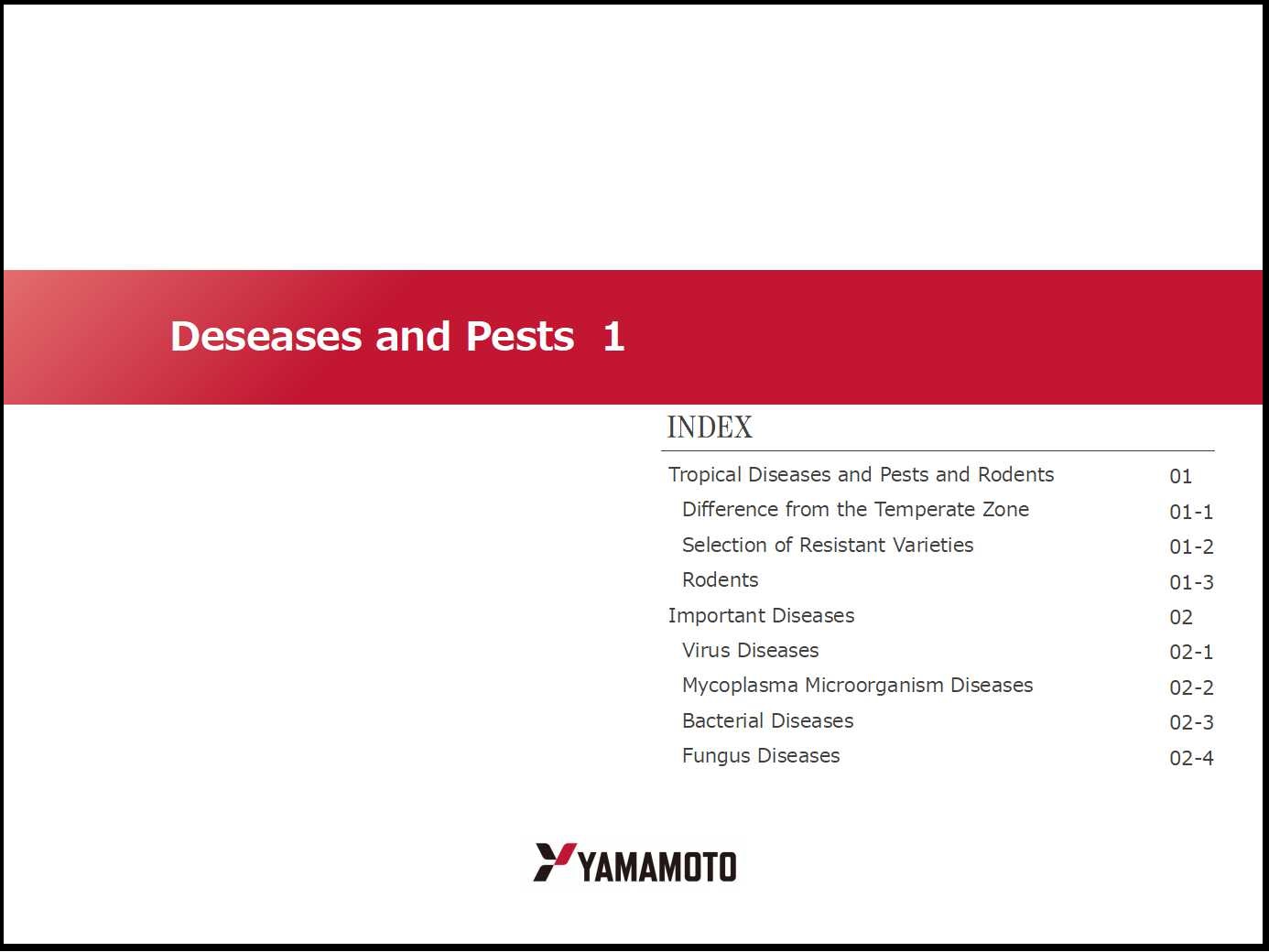15. Diseases and Pests 1
- INDEX -
Tropical Diseases and Pests and Rodents
Difference from the Temperate Zone
Selection of Resistant Varieties
Rodents
Important Diseases
Virus Diseases
Mycoplasma Microorganism Diseases
Bacterial Diseases
Fungus Diseases
Tropical Diseases and Pests and Rodents
Difference from the Temperate Zone
Many diseases and pests are common between the tropical and temperate zones. However, there is some difference in virus disease between the two zones, due to the difference in distribution of vector insects.
The tropical zone has a higher temperature, which easily allows various kinds of diseases and pests to grow.
In places where rain falls all year long or where there is no clear distinction between dry and rainy seasons, rice cultivation is done continuously, which allows diseases and pests to grow uninterruptedly. Thus, the tropical zone is likely to suffer from damage by diseases and pests to a much greater degree than the temperate zone.
Selection of Resistant Varieties
Many of the developing countries are poor and can not afford the use of chemical prevention. Also, caution must be taken so as not to cause damage from the use of agricultural chemicals and environmental pollution. Further, not all chemicals are readily available to developing countries. On the other hand, many varieties of rice are being examined and officially labeled as to their resistance characteristics against diseases and pests as one important feature of individual varieties. The most important and practical way of prevention is to try to select and use a resistant variety according to the official labeling.
Herein, space does not allow us to describe all the details of various diseases and pests. We therefore want to examine the important diseases and pests and damage thereof.
Rodents
In tropical rice-cropping, and especially in the latter half of the growth process and thereafter, damage by rodents occurs frequently. It is difficult to eliminate and has become a serious problem. It is impossible to know exactly how extensive the damage is, but it is said that as much as 15 - 20% of the total rice production of Indonesia has been damaged by rodents. In this chapter, we will only identify the existence of the problem.
